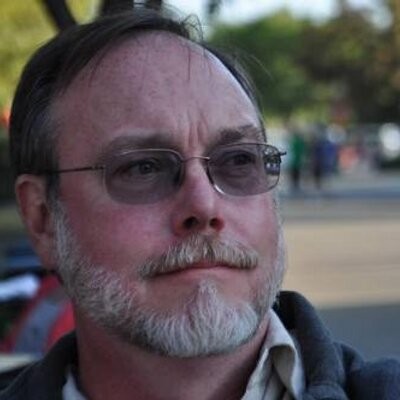Jim Walsh noticed something odd. The clinical assistant professor in the Department of Political Science at the University of Colorado Denver was researching the immigration of the Irish to the Rocky Mountain region during the Silver Boom of 1879-’93, the kind of work that usually leads scholars to musty rooms full of bundled records, or library tables crammed with books and yellowed first-person accounts. But this time, it had led to a lonely Leadville graveyard.
There, stretched out before him, were “rows and rows and rows – acres, really – of unmarked graves,” he recalls. The Evergreen Cemetery, Leadville’s second, established in November 1877, holds what is marked by signage at the site as the Old Catholic section and in period maps as the “Free Catholic” section. In it, Walsh says, he found “somewhere between 1,200 and 2,000” burial sites sinking into the ground, punctuating the landscape with rectangular depressions, some pierced by the growth of young pines.
The graves held Irish miners, their wives and their children, buried here between 1878 and 1890 and representing a mind-spinning mortality rate, even if 40,000 people lived in Leadville in 1880, making it the second-largest city in the state, next to Denver. People died like flies.
“We have about a hundred names with ages,” Walsh says of the extensive, ongoing research that he and his students have conducted to identify the dead — or at least find out how and why so many perished. “I did the math and found the average age of 23. Life expectancy was short, in the thirties, and infant mortality was high. There are hundreds of infants and children buried out there.
“Of course, for the workers, a big killer was mining accidents, but a lot of the time they just listed cause of death as pneumonia. It was used as a catch-all term. There was typhoid, black lung. It’s a story that has been waiting to be told.”
Now Walsh and his students have done just that, and this week their work will culminate with a visit from the Consul General of Ireland, Adrian Farrell, who will participate in three days of historical activities including a commemoration ceremony in honor of all buried in Evergreen’s section of forgotten funerary grounds.
On Thursday, September 29, Farrell will attend a reception and talk, “Celebrating the Irish in Colorado,” at the Molly Brown House Museum, 1340 Pennsylvania Street. On Friday, September 30, there will be a screening of 1916: The Irish Rebellion on the Auraria campus, with Farrell and Jim Lyons, Denver’s honorary consul of Ireland.
And at 11 a.m. on Saturday, October 1, Leadville will hold its traditional St. Patrick’s Day Practice Parade (held every fall because it’s usually too awful at 10,152 feet above sea level to have a parade in March). At 1 p.m. at the Annunciation Catholic Church, 609 Poplar Street, Farrell will introduce Walsh, who will speak on “The Irish Road to Leadville”; Denver historian and public servant Dennis Gallagher will then lead a historic tour of the area. At 3 p.m., Father Rafael Torres-Rico of Holy Family Parish will join in a commemoration of the anonymous dead.
“It’s important to note that, though two-thirds or more of the dead there are Irish, there are many there who were not. We want to recognize everyone,” Walsh says.
Later that evening, Irish Network Colorado president Maura Clare will lead a discussion on the possibility of a memorial to Irish immigrants in the Rocky Mountain West.
Of those who came to Leadville from Ireland, Walsh notes: “They weren’t the Famine generation; that was the 1850s, a generation earlier. The thing about these Western miners is they were desperate, poor and transient. They spent their lives drifting from one mining camp to the next, staying as long as the work kept up, as long as the lodes held out.
“The cemetery is a reminder to us to get past the stereotypical thinking about Western mining towns. History has been turned into a commodity, the Wild West. What we’re trying to remind people of is that it wasn’t a bunch of independent agents out there. These were very large corporations working people to death for $3 a day," he says. “There were two major strikes during the period, and traditions of resistance used in Ireland were used here. When they fought for better conditions, the National Guard was called in, martial law was declared. Strikers were arrested for vagrancy; they forced them to work in chain gangs, building roads. And they never were able to win any better conditions or better pay.”
Walsh sees this week's events as key to unearthing more about the lives lost there, and their larger meaning. “It opens up a larger conversation about labor and ethnicity,” he says. “And in the single day since we’ve announced, I’ve heard from five people from around the world who have Irish roots in Leadville.”
The events are free, but reservations are required for the Denver programs. Register and find out more at irishnetworkco.com.
[
{
"name": "Air - MediumRectangle - Inline Content - Mobile Display Size",
"component": "12017618",
"insertPoint": "2",
"requiredCountToDisplay": "2"
},{
"name": "Editor Picks",
"component": "17242653",
"insertPoint": "4",
"requiredCountToDisplay": "1"
},{
"name": "Inline Links",
"component": "18838239",
"insertPoint": "8th",
"startingPoint": 8,
"requiredCountToDisplay": "7",
"maxInsertions": 25
},{
"name": "Air - MediumRectangle - Combo - Inline Content",
"component": "17261320",
"insertPoint": "8th",
"startingPoint": 8,
"requiredCountToDisplay": "7",
"maxInsertions": 25
},{
"name": "Inline Links",
"component": "18838239",
"insertPoint": "8th",
"startingPoint": 12,
"requiredCountToDisplay": "11",
"maxInsertions": 25
},{
"name": "Air - Leaderboard Tower - Combo - Inline Content",
"component": "17261321",
"insertPoint": "8th",
"startingPoint": 12,
"requiredCountToDisplay": "11",
"maxInsertions": 25
}
]











